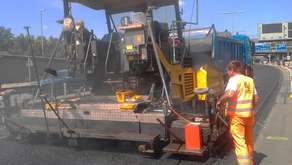ASW Asphalt Profi-Thermo
ASS 272

Since 2015, thermal vehicles are a legal requirement for highway construction in Germany, and prescribed for all new asphalt surfaces nice 2019. With the "Asphaltprofi Thermo", Fliegl offers push-off vehicles that combine perfect insulation with maximum quality and process reliability for asphalt road construction.
The insulating material used for the body is Fliegl-Isotherm, a lightweight material that is applied to the outsides of the body so that it is fully enclosed. This composition allows the ASS Asphaltprofi Thermo to achieve outstanding insulation values. The body, floor, front and rear are fully insulated.
Both you and your customers stand to benefit from push-off technology.
High level of stability, even on inclines
Extremely low loading height - easier loading with better overview even when using small wheel loaders and excavators
Very low load centre of gravity ensures significantly faster and better handling on country roads and off-road
Enhanced transport performance with reduced wear and diesel costs - less hard braking before corners thanks to "lowered vehicle" - less hard acceleration after corners reduces diesel consumption
Complete emptying, even with highly viscous materials such as clay, loam, silt, "silent asphalt" - no manual cleaning or scraping of the tipper bridge required - enhanced safety due to lower risk
Complete emptying of body even with asphalt types such as stone mastic, OPA, PMA, rubber-modified bitumen, etc. - Reduces standing times and costly disposal of purchased mixture
Enhanced paving quality due to continuous mixing throughout the unloading process
Fliegl push-off technology ensures maximum stability. The danger zones during unloading are minimal, thereby enhancing work safety.

